Iron Kingdoms by Gr3y
Introduction
Original SA post I'll do the Robotech core rules next.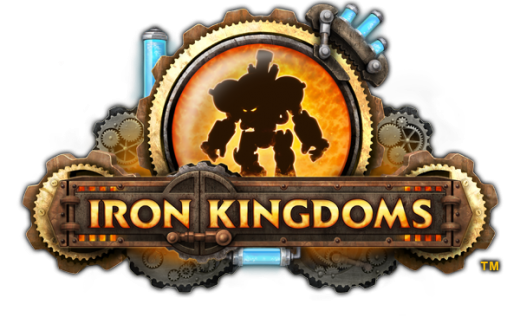
Launched in 2004 as a series of D20 supplements to complement Privateer Press’ flagship miniatures game Warmachine , the Iron Kingdoms quickly established itself as a new and novel setting.
While many popular fantasy settings are grounded in distinctly medieval trappings, the Iron Kingdoms are in the midst of an industrial revolution. This is a world of gaslamp lit cities, rustic farming villages, savage beasts, brave knights, and world weary trench soldiers all thrown together. Embracing a steampunk aesthetic and eschewing or subverting many traditional Tolkienesque tropes, the world of Western Immoren is both familiar and alien, providing an exciting backdrop for nearly any type of adventure.
With the launch of Dungeons and Dragons Fourth Edition in mid 2008, and the uncertainty of the d20 licence, content for the IKRPG slowed to a trickle in No Quarter (Privateer Press’ in house magazine), and then stopped entirely. There were rumors that the setting would be ported to D&D 4e, or go to pathfinder, or be dropped in favor the much more lucrative miniature games. However, in 2011 Privateer announced that they were working on a new edition that would use its own proprietary system, based on the game engine that drives both Warmachine and its companion game Hordes. A little over a year later, the core rule book was released.
It’s pretty dope.
The book itself is a weighty hardcover tome of about 360 full color, high gloss pages packed with illustrations, and diagrams. I checked to see if would fit in my 4e PHB1&2 gift set’s slip case. It didn’t.
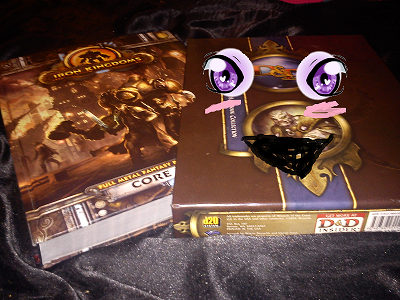
Uguu.
The book begins with a brief recap of the game’s history, from a D20 adventure path, to two award winning miniatures game, to this new version (strangely enough leaving out the apparently failed video game). From there we get a brief section on what is a role playing game. Which, while traditional, raises the question of why else you would shell out $60 for this book. After an explanation of what it means to play make believe with rules, we get the first of several heads up that future releases will provide more background information, player options, careers, etc. While I found it a bit annoying to get shilled to in a game I just bought, I can forgive PP in this case because this is an established setting and there was no way to fit everything into the launch title. Also, it helps that I’m a giant sperging fanboy for just about everything they’ve ever done.
We’re then given a one page overview of the Iron Kingdom and introduced to the various factions and major concepts of Iron Kingdoms.
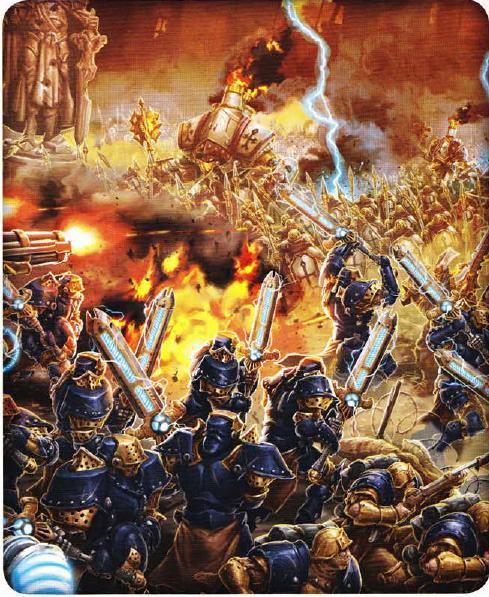
Spell slots? Is that like a scabard?
Mechanika : Combining the latest in both mechanical and arcane engineering, these devices are rapidly reshaping the world. Throughout Western Immoren, Mechanikal devices are replacing lost limbs, revolutionizing industries, and wreaking unprecedented havoc on the battlefield.
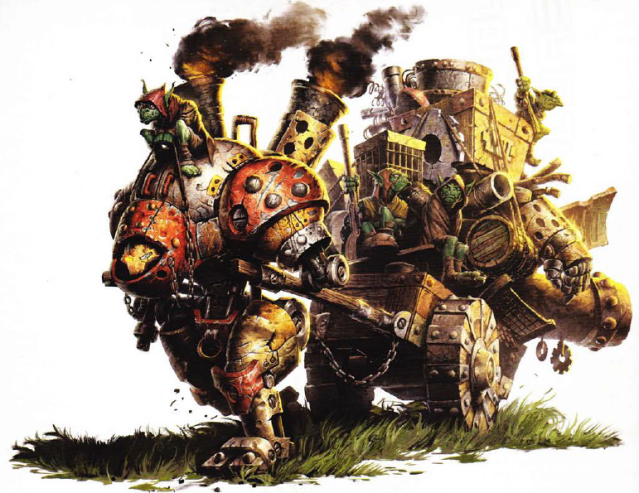
A few more jobs and they can finally get spinning rims!
Steamjacks : These automatons run on steam and are built around an artificial brain called a Cortex. When armed and armored for war they’re called Warjacks, when used for more peaceful purposes (either by design or retired and decommissioned military units) they’re referred to as Laborjacks.
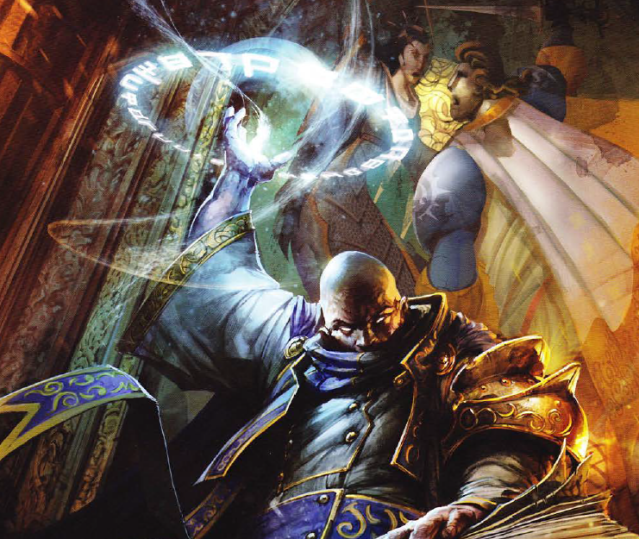
This is me pretty much every time my girlfriend makes me read a paranormal romance book...
Magic : There’s simply no denying it. The supernatural is a tangible force in the world of the Iron Kingdoms. Sorcerers manifest incredible power, Arcanists are deciphering the very nature of reality through meticulous study and experimentation, and even the gods themselves have been known to interfere in mortal conflicts.
Next time: Geopolitics and you! : If a Train leaves Korsk at 20 miles per hour, and another train leaves Caspia at 22 miles per hour, how long until Merywyn burns to the ground?
The Actual Iron Kingdoms
Original SA postLGD posted:
Point of order! While there were a series of D20 Iron Kingdoms RPG books released in support of the Warmachine miniatures game from 2004 onwards, the Iron Kingdoms setting was actually established in a series of D20 adventures beginning in 2001 (the Witchfire Trilogy ) and predates the creation of Warmachine . Of course the implementation and setting assumptions of the Iron Kingdoms in the original Witchfire Trilogy are *pretty* different than the modern incarnation, and the two wargames are much more responsible for popularizing the setting than any number of RPG books, but I apparently am feeling the need to be slightly pedantic tonight.
Anyhoo...

Before getting into roughly a hundred pages of setting fluff we get a brief intro to the actual Iron Kingdoms themselves.
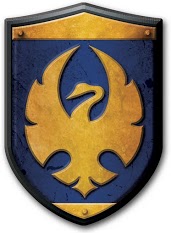
Bawk bawk!
Cygnar : This is basically steampunk Not-America. Lots of good land, ample resources, a melting pot of different peoples (and species); on paper it seems to be a pretty swell place. Home to some of the best centers of learning in the known world, Cygnar tends to lead the way in terms of both social and scientific advancement. Cygnar’s only, minor , issue is that a non-insignificant portion of its government is trying to depose the current king and re-install his paranoid, murderous brother. Oh, and it’s also surrounded by existential threats. Other than that it’s just peachy.
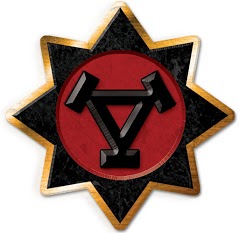
Not at all like Russia are you... Comrade!?
Khador : Steampunk Not-Russia. Big, frozen, trying to reestablish it’s empire of old. While it isn't as mechanikally advanced as Cygnar, Khador prides itself as being the first to harness steam power and has taken great strides in closing the technological gap. Ruled by a young Empress whose eighteenth birthday present to her self was most of a neighboring kingdom, they are currently engaged in a protracted on again off again war with Cygnar along their (rapidly expanding) southern border. Khador boasts some of the largest industrial infrastructure in the world, managed with as much an eye of lining the pockets of the ruling Kayazy, as towards patriotism. Also, has at least one Baba Yaga.
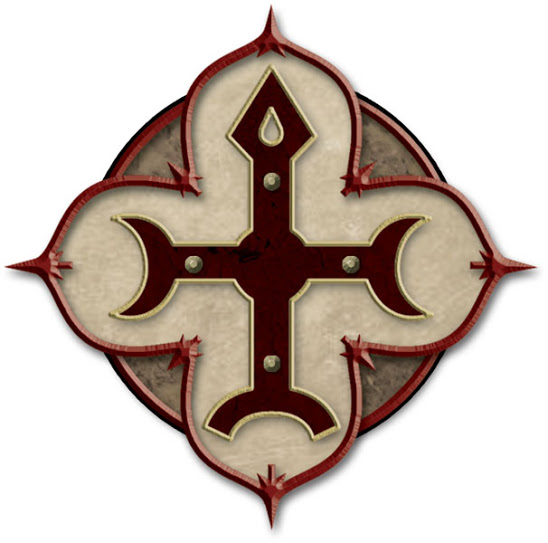
Highly reactive to prayers.
The Protectorate of Menoth :The youngest Iron Kingdom, the Protectorate was established due to a religious civil war in Cygnar. The insurgents were eventually granted a large portion of, what was thought to be at the time, barely inhabitable land as a condition of peace. Well, as it turns out, that land provided a huge number of rugged natives that have converted to the worship of Menoth, access to useful (and incredibly flammable) crude oil that is refined into Menoth’s Fury, and what seems to be the original city of man reaffirming their commitment to their faith. Oh, and diamonds. A grip of diamonds. The nation is ruled in the iron grip of a strict theocracy and has recently launched several crusades to convert as many as they can to their faith and burn the rest.
Next time: Not Scotland, Elves that are actually cool, and burned down cities. Or, we can drop the fluff and get straight to the crunch if you would prefer.
The Remaining Iron Kingdoms
Original SA post
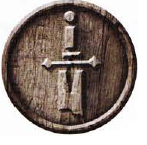
We may be poor... but at least we have a bunch of swamps!
Ord : The Iron Kingdom that everyone forgets about. They have managed to stay mostly out of the current conflict due to a combination of having a powerful navy, and land that is basically worthless. Their king, Baird, is widely seen as a hedonist more concerned with where his next flagon is coming from then the needs of his nation. This image suits him fine since his nation’s independence is balanced on a knife’s edge and he is doing everything he can to keep Ord from getting involved in Cygnar and Khador’s latest war.
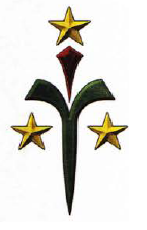
Remember when you used to have a country? Good times.
Llael: Remember when I said that Khador’s empress treated herself to an entire country for her birthday? It was these guys. Basically a Not-France, Llael has been mostly conquered by Khador in the past few years. While allies of Cygnar, the Khadorian assault was so fast that it caught everyone by surprise. Coinciding with the Llaelese invasion was a renewal of hostilities between Cygnar and the Protectorate of Menoth, as well as Cryxian incursions to the... well everywhere. With Cygnar facing war on multiple fronts that was pretty much it for Llael. Except things managed to get worse. See the Protectorate, whose relations with Khador had been souring, swept in from the east. Initially welcomed by the Llalese resistance it rapidly became clear that the Northern Crusade wasn’t there to liberate so much as to consume. The northeast of the country is in “firm” resistance control but things are looking grimmer and grimmer.
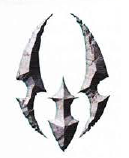
Rivendell uber alles.
Ios : Land of the elves. Immoren elves are pretty standard fantasy fare, they are reclusive, wise, and long lived. Oh, and genocidal religious extremists . They blame human arcanists for the loss of their gods (and they may not be wrong in doing so). In recent years one of their more extreme sects, The Retribution of Scyrah, has initiated a series of lightning strikes against human arcanists. Iosans are uniquely positioned to do this as their Myrmidons (their equivalent of the Steamjack) run off ambient energy instead of coal. This greatly simplifies their logistical needs and allows them to move fast and far to get to their targets. Basically, Immoren elves are highly trained military operators waging a war of assassination and lightning strikes against humanity.
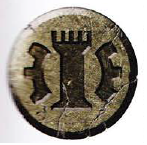
Hi ho, hi ho, off to war we go!
Rhul: Land of the dwarves. Rhul is a mostly mountainous region rich in mineral wealth. This fits its inhabitants fine as the Rhulfolk are widely considered to be some of the best metalworkers in the world. Rhul’s government consists of a byzantine system of proportional representation of the various clans. Rhul is also an incredibly peaceful nation, with one civil war in its history. Most modern internal conflicts are solved by legalized duels or limited (and highly regulated) warfare. Rhul for the most part stays neutral in human conflicts, although they were key to the success of the Orgoth rebellion. In turn, no human kingdom has attacked Rhul, due to both the massive force of arms that the kingdom is believed to be able to call to bear if needed, and the fact that the entire nation is basically a giant natural fortress. Rhul is also the home of the Ogrun, the Immoren equivalent of Orcs. Naturally Dwarves and Ogrun are bitter enemies.
Nope! They are, in fact, bff 4 lyfe, with Ogrun being culturally Rhulic and considered member of whatever clan they live with.
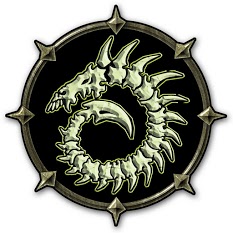
Absolutely no redeeming features.
Cryx : The Nightmare Empire. While Cygnar is positioned as the “good guys”, Khador is home to arguably the hero of the setting, and the Protectorate falls into a philosophically uncomfortable area, Cryx is balls out evil. The Scharde Islands were long known as a haven for pirates, criminals, and other undesirables. Then a dragon, Toruk, showed up and declared itself ruler. When the local pirate lords snubbed Toruk’s invitation to come declare their fealty to their new god he responded by turning their largest and most prized ship, the Atramentous, into a monstrous indestructible vessel crewed by the undead. With a single breath. After that, twelve of the thirteen pirate lords swore fealty and were rewarded by being freed from the shackles of their flesh and becoming the Iron Lich lords in charge of Toruk’s new empire. The thirteenth was just freed from his flesh. Since then Toruk has used his nation to fulfill his dream of finding his lost progeny. So he can eat them.
That wraps it up for the various power blocs. Next time we’ll start a big ass history lesson.
Creation Myths
Original SA post
Like I said earlier, the first hundred pages or so of this book is fluff. While that may not be for everyone I think it does a fantastic job of getting you grounded in the setting (by giving a concise history to the present era) and is just as useful for players as it is for GMs.
Caen, the world the game is set on, was formed by the god Menoth to bring order to the natural infinite chaos. He assumed a form that pleased him and strode across the young world, and where his shadow fell humanity emerged in a shape similar to his. From the night sky came the Wurm, the Beast of All Shapes, to return chaos to the order that Menoth forged. Where Menoth’s shadow called forth humanity and higher thought, the Wurm’s brought forth savage predators that only care for the kill and the feast. Their battles would shatter the land, giving rise to mountains and oceans as their titanic blows rent the world itself. Their war would eventually leave the mortal realm of Caen and continue into Urcaen, the world’s spiritual mirror. Their battle so consumed Menoth’s attention that humanity was left to its own, trying to survive the onslaught of the voracious creations of the Wurm. In time most humans would turn to the Wurm themselves, worshiping the primal animal spirits that once poured forth from its shadow.
Of course, that’s just the human’s version... Trollkin, ogrun, and gobbers have their own.
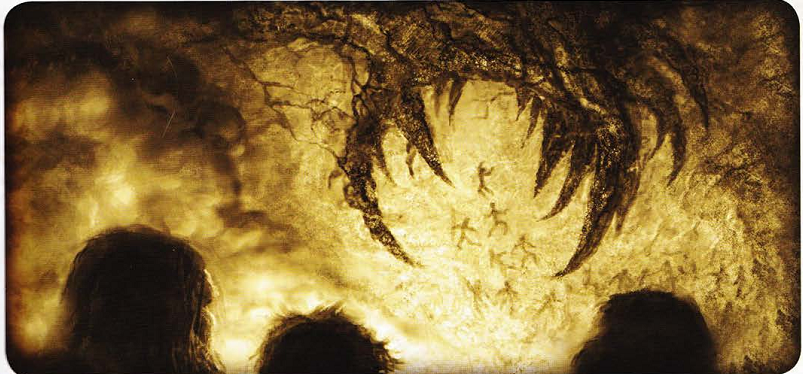
Caen is, itself, the physical body of the goddess Dhunia. She is the most primal god and wellspring of all life. Where the Wurm destroys she creates, where he burns her she grows new life, where the Wurm devours she nourishes. It was through this constant cycle of ravishment and regrowth that the Dhunian races were born, and it is because of this that they are capable of both great nobility and great violence. Eventually Dhunia grew tired of this struggle, and so chose the greatest hunter from amongst her children, who would become known as Menoth. To him she gave the strength to fight the Wurm and set him to his task. Where he stalked sprang forth humanity, with the same desire to control the wilds. Eventually the hunt left to a nightmare realm, separate from Caen, that was born of the Wurm’s dreams.
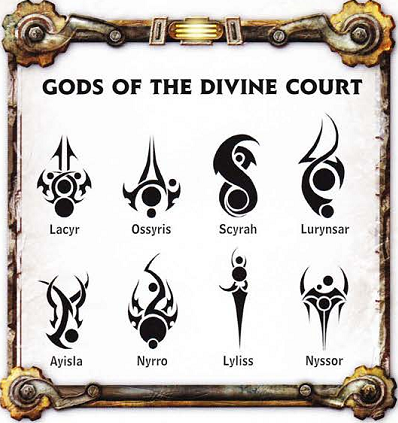
The elves of Ios have no legends of the creation of the world, but trace their race back to the machinations of the divine court of the Veld, a spiritual realm now thought to be a remote corner of Urcaen. There, the eight gods of the Iosian pantheon, having been created by the mingling of Caen’s sun and its moons, worked hard to create a refuge in the wilds. Lyoss, the great palace of the Veld, was created to house these gods and their servants. Eventually Lurynsar, of the Summer and and Chief of Scouts, saw mortals souls pouring into Urcaen. She followed them to their source and found Caen. There she discovered both the savagery of mortal existence and how it strengthened the souls of those who endured it, and thus their gods as well. Seeing the benefit of being tied to a mortal race the divine court set out to create one of their own. Through painstaking work they improved on the crude existing races, and when their progeny had proven themselves worthy, revealed their presence to guide them. This explains the Isoan’s longevity, enlightenment, and how they were able to spread across a vast empire before humanity had even learned the basics of agriculture.
Next time: Dwarfs and the coolest creation myth of them all.